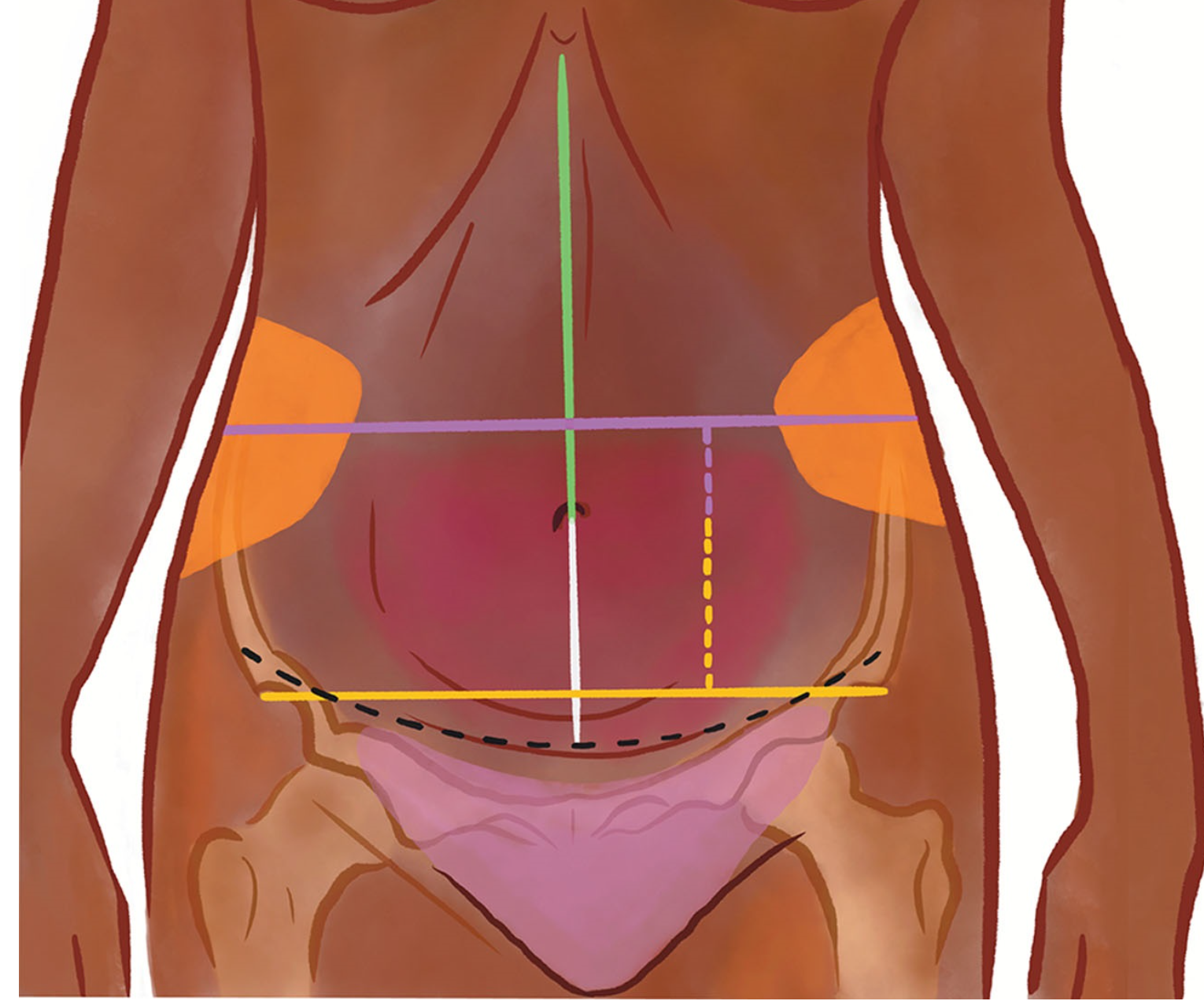Navels come in all manner of shapes influenced by how the umbilical cord was cut, the healing process, body structure, and other factors such as body fat and abdominal wall structure.
When most people stare at their belly button, they never
care if it is situated too high or too low on the abdomen. But plastic surgeons
do. They use something called the golden ratio – a number around 1.62, believed
for years to represent ‘perfect’ natural proportions.
In cosmetic surgery, if the distance from your chest bone to
your belly button (navel), compared to the distance from your navel to the
lower part of your tummy, is close to that number, doctors say the abdomen
looks nicely balanced.
Turns out Kenyans, especially men, are different.
Plastic surgeons at the Kenyatta National Hospital (KNH)
made an unusual request to examine the belly buttons of patients, hospital
staff, students, and even visiting family members of inpatients, between
November 2023 and January 2024.
The 411 adults who agreed (62 per cent men) were aged 18-65
years. They signed consent forms and were led to a private examination room at
the hospital, in the presence of a nurse and a companion of their choice.
Participants lay on their backs during the examination.
The results could change how plastic surgeries are done in
Kenya.
The surgeons found that Kenyan belly buttons tend to sit
slightly lower on the abdomen than international averages. The average Kenyan
umbilical ratio is 1.69, not the global 1.62. Men showed a higher ratio of
1.74, which means their navels were positioned notably lower, while women
averaged 1.62, almost perfectly matching the classic golden ratio. Body weight
also played a role — individuals with higher BMI tended to have belly buttons
positioned slightly higher on the abdomen.
The results were published last week in the Journal of the American Society of Plastic Surgeons, in a paper titled, “Defining Umbilical
Norms in Kenya: A Morphometric Analysis of 411 Adults.” This groundbreaking
study is the first of its kind in sub-Saharan Africa. It was led by Dr Sama
Fofung, a plastic, reconstructive, and aesthetic surgeon at KNH.
Dr Benjamin Wabwire, KNH’s head of plastic and
reconstructive surgery, and Dr Joseph Wanjeri, a plastic surgeon and a lecturer
in the Department of Surgery at the University of Nairobi, also took part in
the study.
The surgeons explained why the findings are important in
their work: “Surgical procedures involving the umbilicus—such as
abdominoplasty, umbilicoplasty, hernia repair, and body contouring after
massive weight loss—rely on accurate, culturally appropriate references for
umbilical location and shape.”
One intriguing discovery is that some Kenyans still prefer
the golden ratio visually, even though their bodies do not follow it. The
authors write: “Kenyan participants sometimes still favor 1.62 in side-by-side
image comparisons—pointing to a divergence between the actual local ratio and
individuals’ subjective aesthetic judgments.” They describe this as a classic
cosmetic dilemma: “‘what we have’ versus ‘what we want’ can differ.”
The authors believe plastic and reconstructive surgeons
should now start using Kenyan measurements, not imported ones. They propose a
formula: “For abdominoplasty or isolated umbilicoplasty in Kenyan and similar
East African patients, beginning with an X:U target of approximately 1.69—then
fine-tuning by −0.03 per BMI unit and +0.10 for male sex—should recreate a
position that aligns with local anatomical norms.”
They added: “These population-specific metrics provide
Kenyan surgeons with a numeric and morphological template for anatomically
precise abdominoplasty and umbilicoplasty.”
Another surprise of the study was the belly button shape. Now,
navels come in all manner of shapes influenced by how the umbilical cord was
cut, the healing process, body structure, and other factors such as body fat
and abdominal wall structure.
But if your navel is not oval, you are an exception. The
authors reported: “The oval contour was overall most common (49.6 per cent)
followed by distorted/protruded (19.0 per cent), T-shaped (15.1 per cent),
horizontal (11.2 per cent), and vertical (5.1 per cent).”
Kenyan men had even stronger dominance of the oval shape.
“Two-thirds of men have oval umbilici, versus a more diverse pattern in women,”
the authors said.
The participants were also asked if they favoured specific
umbilical shapes, such as oval, vertical, or T-shaped.
The vertical navel shape emerged as the most popular,
aligning with several Western studies that identify vertically oriented navels
as aesthetically appealing.


